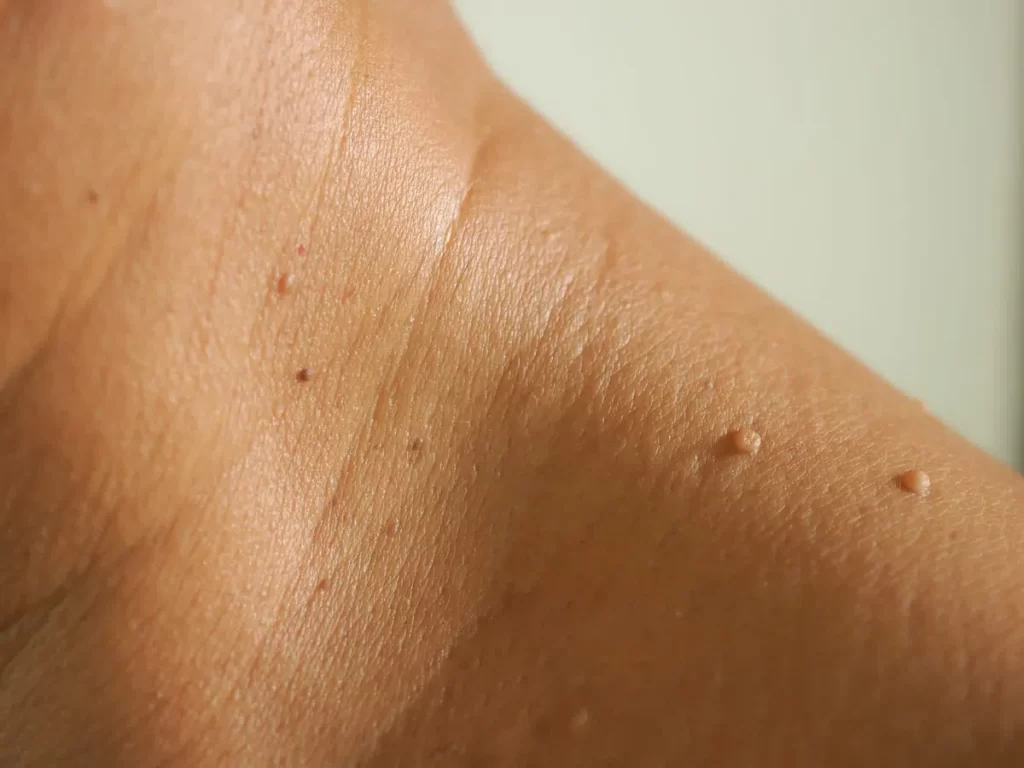Home <Services < Dermatology < Skin Tag & Wart Removal
Skin Tag & Wart Removal
What Are Skin Tags?
Statistics suggest that skin tags occur in more than half the population at one point or another in their lives. Obese, middle-aged adults are the most likely to develop these tags, but it’s possible at any stage of life. Plump babies, in particular, may develop skin them. Skin tags are nothing more than a tiny bit of skin that projects from the surrounding skin, often appearing balloon-like. They are most common in places where friction occurs, such as skin folds or where clothing presses against the skin, such as the waistline. Below is a list of the most common sights for skin-tags:
- Chest
- Beneath breasts, particularly in women
- The base of the neck
- Buttocks
- Groin
- Underarms
- Eyelids

What Are Warts?
Warts is the name given to a form of noncancerous growth that occurs when your skin becomes infected with HPV, the Human Papillomavirus. The presence of this virus stimulates the growth of additional cells, causing thickening and hardening of the skin. While it’s possible for warts to appear anywhere on the body, they are most commonly found on the feet and hands. There are multiple types of wart that vary in both appearance and location.
- Common Warts – These are the most common warts and appear mostly on the hands and feet. They are most frequently found near the nails and are typically about the size of a pea. They often contain dark spots with a seed-like appearance. These ‘seeds’ are actually minute blood clots.
- Plantar Warts – These warts form on the sole of your feet, and often feel like there’s a pebble in your shoe you can’t shake. These warts tend to grow inwards, rather than outwards, due to the pressure caused by walking on them. They frequently are confused with calluses but are distinguished by black dots found in or around them.
- Flat Warts – These warts tend to be on the smaller side, only 1/8th of an inch wide. They are also smoother but tend to grow in greater numbers. These warts can be found in clusters of 20 to 100, and are most commonly located on the legs, in the beard, and on children’s faces.

